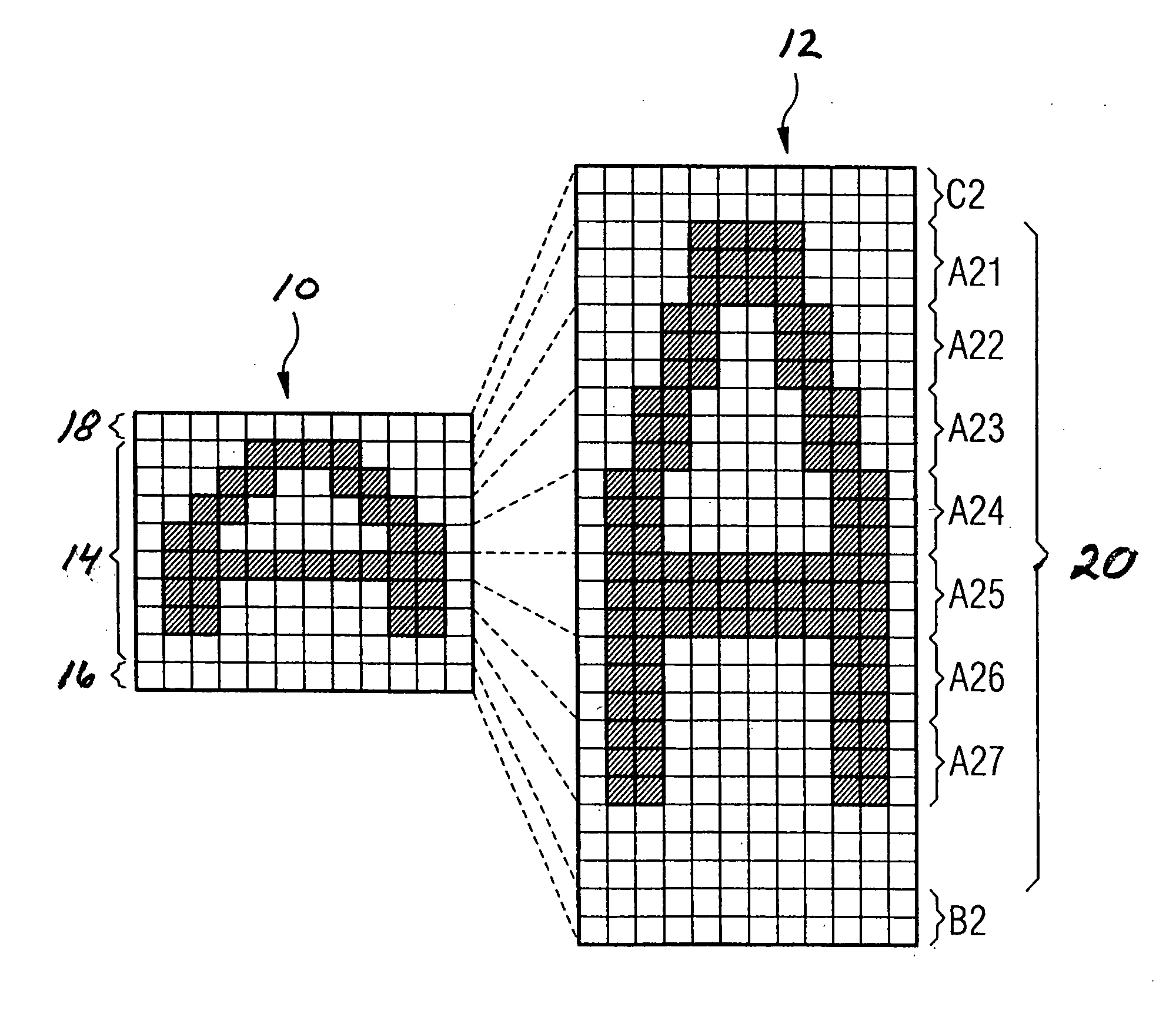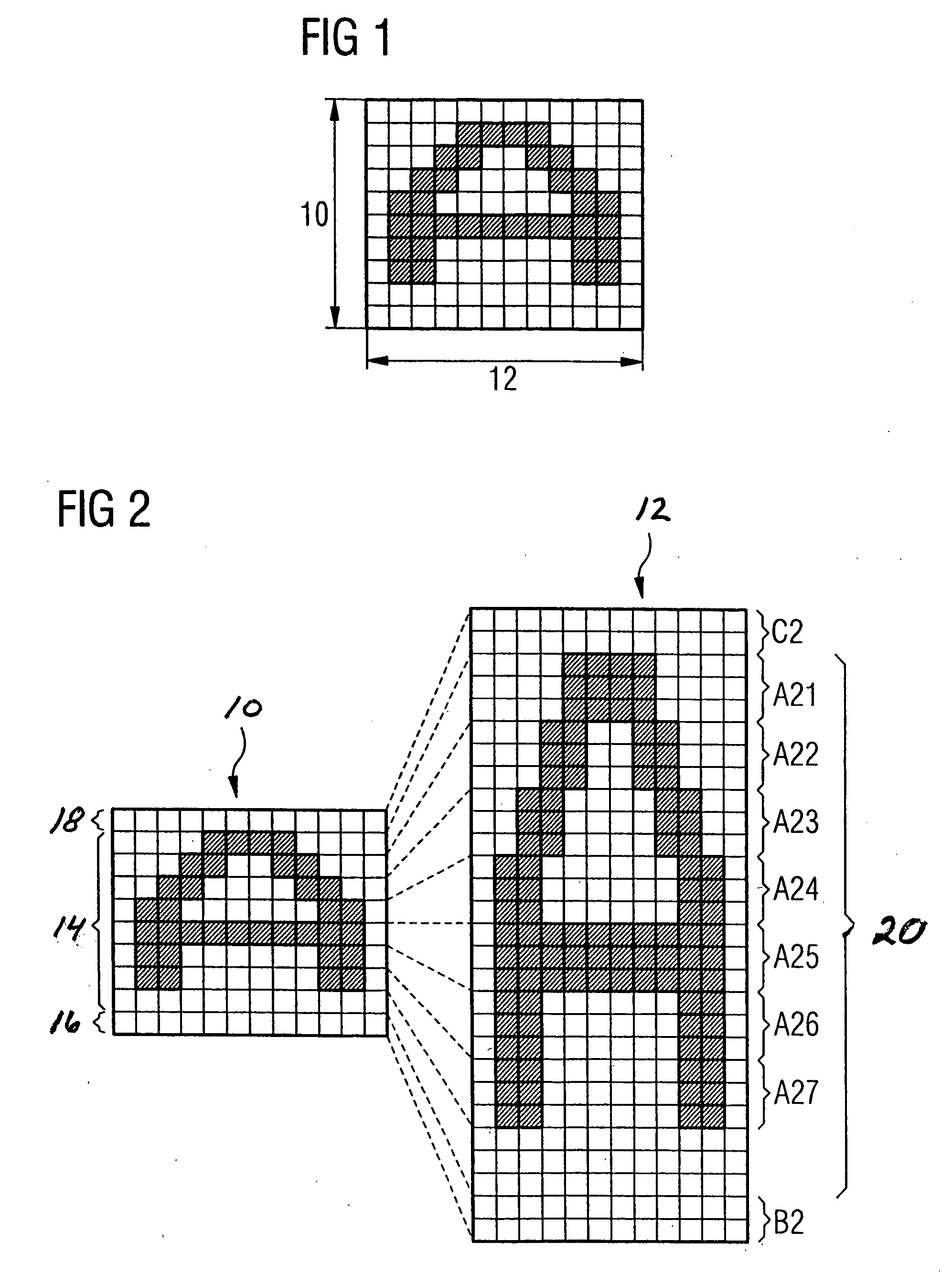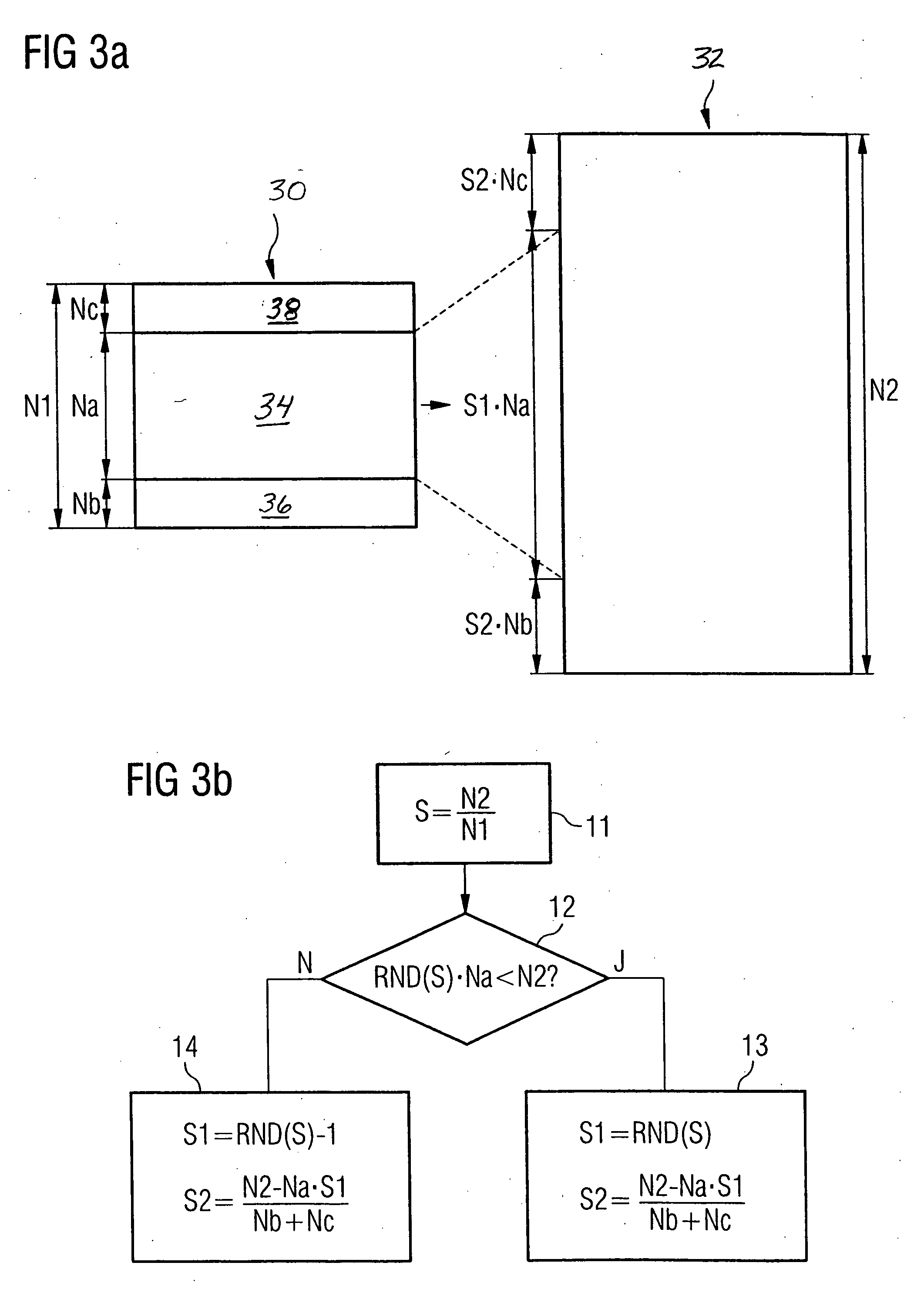Method of scaling a graphic character
a graphic character and character technology, applied in the field of television signal processing, can solve the problems of asymmetries in the enlarged characters, one or a few lines not being displayed at the upper or lower margins of the teletext image,
- Summary
- Abstract
- Description
- Claims
- Application Information
AI Technical Summary
Benefits of technology
Problems solved by technology
Method used
Image
Examples
Embodiment Construction
[0026] The invention is first explained for the case in which scaling of a character is to be achieved using a non-integer scaling factor greater than one.
[0027]FIG. 2 shows on the left a character 10 to be scaled, which comprises a pixel matrix with m lines of n pixels each. In the example, the character shown corresponds to the teletext character for the letter “A” which comprises ten lines (i.e., m=10) and twelve pixels per line (i.e., n=12). The goal is to scale this character in the line direction using a non-integer scaling factor value S to obtain a scaled character 12 which comprises a pixel matrix of (S•m) lines of n pixels each. This type of scaling in which the number of lines of the pixel matrix is increased is hereinafter called line scaling.
[0028] To scale in the line direction the displayed teletext character 10 comprising an (m×n) pixel matrix, the character matrix is divided into a first character segment 14 and at least one second character segment 16, 18, where ...
PUM
 Login to View More
Login to View More Abstract
Description
Claims
Application Information
 Login to View More
Login to View More - R&D
- Intellectual Property
- Life Sciences
- Materials
- Tech Scout
- Unparalleled Data Quality
- Higher Quality Content
- 60% Fewer Hallucinations
Browse by: Latest US Patents, China's latest patents, Technical Efficacy Thesaurus, Application Domain, Technology Topic, Popular Technical Reports.
© 2025 PatSnap. All rights reserved.Legal|Privacy policy|Modern Slavery Act Transparency Statement|Sitemap|About US| Contact US: help@patsnap.com



